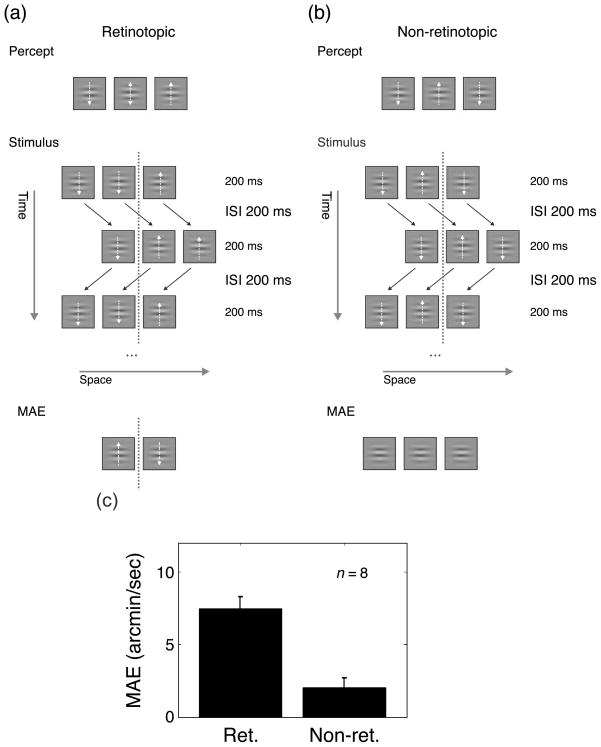Figure 4.
Ternus adaptation. Squares carried Gabor patches whose carriers drifted either upward or downward for the duration of one frame of 200 ms, as indicated by the white arrows (not presented in the actual stimulus display). With an ISI of 200 ms, group motion of three squares was perceived (Videos 8 and 9). (a) In the “retinotopic” condition, Gabors were arranged in such a way that the Gabor in the central square was perceived to be drifting alternately upward and downward from frame to frame (as indicated by the white up–down arrow). Retinotopically, coherent drift motion was presented (the direction of drift for the Gabors positioned to the left of the virtual midline was always opposite to the direction of drift for the Gabors positioned to the right of the midline; the midline, indicated by the dotted line, was not shown in the actual display). The retinotopic coherent drift motion is invisible to the observer because non-retinotopic, coherent motion is perceived. To test for motion aftereffect (MAE), two squares were presented as test stimuli after the offset of the Ternus–Pikler display. A strong MAE was observed. (b) In the “non-retinotopic” condition, Gabors were arranged in such a way that, retinotopically, Gabors drifted in different directions from one frame to the other. Perceptually, a coherent upward or downward drift was perceived in each square. Only a very weak MAE occurred. (c) MAE for conditions (a) and (b).

